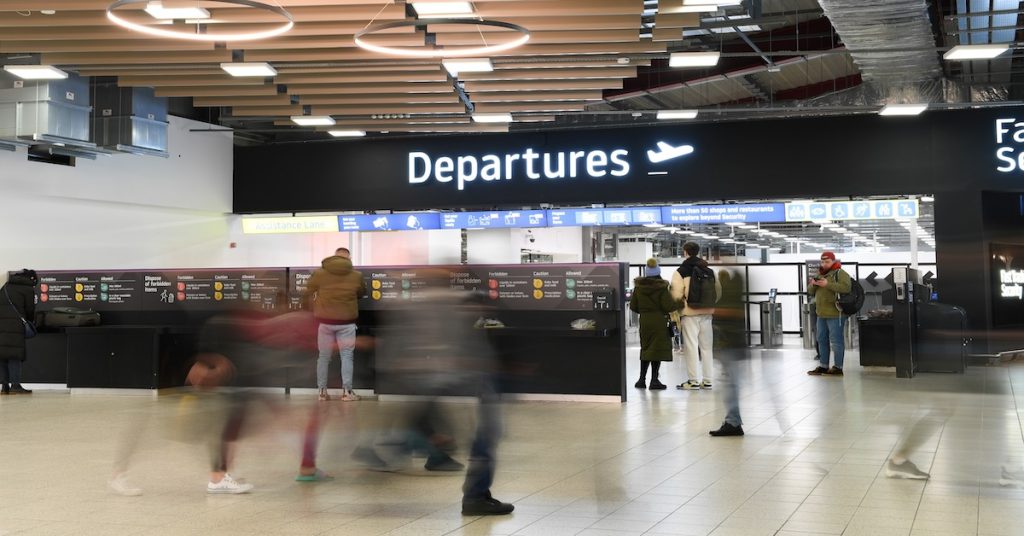This August, a significant increase in air fares was observed, marking a notable rise in travel costs.
According to new data, air fares surged by 22%, representing the second largest hike since 2001.
Overview of Air Fare Hike
In August, air fares experienced a substantial increase, marking the second largest hike in over two decades. This rise was officially recorded in the annual inflation figures released recently. Despite this surge, the Office for National Statistics (ONS) noted a contrasting decline of 2.1% in the same period last year. This trend highlights significant volatility in air travel costs during peak seasons.
Factors Contributing to Price Change
The increase in air fares was largely driven by elevated prices on European routes, which contributed significantly to the overall spike. Amanda Brooks from the ONS stated, “The largest upward contribution to the monthly change in the Consumer Price Index annual rates was from air fares.” The data suggests that while there were price hikes, some sectors experienced slower price growth, particularly in restaurants.
Meanwhile, the impact of reduced fuel prices somewhat offset the air fare increases. The annual inflation rate for restaurants and hotels showed a decrease from 4.9% in July to 4.4% in August, indicating a broader trend of slowing inflation in certain areas.
Comparative Analysis with Previous Years
The statistics reveal that the current 22.2% rise contrasts sharply with the previous year’s decline. In 2023, air fares dropped by 2.1% due to specific market conditions, including the impacts of the pandemic. The previous fall was only the second occurrence of such a trend since the inception of these records in 2001.
It’s essential to consider how seasonal factors, such as the proximity of departure dates to school holidays, play into these fluctuations. The data illustrates the influence of external factors on pricing strategies within the aviation sector.
Moreover, the reduction in motor fuel prices offers context for understanding the inflation landscape, offsetting the consumer burden to some extent.
Implications for Consumers and Industry
The substantial rise in air fares poses challenges for consumers, particularly those planning summer vacations. The ONS highlighted that transport was a significant contributor to inflationary pressures, although reduced fuel costs provided some relief.
Industry stakeholders must adapt to these shifting dynamics. Airlines may need to reconsider their pricing strategies to maintain competitiveness, especially as consumer sensitivity to price changes increases.
One must acknowledge the potential impact on travel demand, as elevated costs could deter customers from booking flights, prompting a need for strategic adjustments.
Government and Regulatory Responses
Government bodies may need to assess the broader economic implications of such fare increases, especially given the ongoing efforts to stabilise inflation. Regulatory frameworks might be required to address potential consumer exploitation.
The ONS data suggests a need for increased monitoring of pricing practices within the aviation industry to ensure a fair market landscape. Potential interventions could include policy adjustments or consumer protection measures.
Aligning with these needs, the aviation industry is urged to provide transparent pricing models to bolster consumer trust and foster sustainable demand.
Outlook for Future Air Travel Costs
Forecasts regarding future air travel costs remain uncertain, particularly in light of global economic fluctuations. Indicators suggest that air fare volatility could persist, influenced by both external economic factors and industry-specific dynamics.
The potential for continued price adjustments underscores the need for consumers to remain informed and adaptable. Travellers might benefit from exploring alternative travel periods or destinations to mitigate cost impacts.
In summary, maintaining an agile approach towards pricing strategies may prove beneficial for airlines, ensuring resilience in the face of economic uncertainties.
Conclusion
The current spike in air fares underscores significant changes in the travel industry landscape. As the second largest surge in over two decades, it serves as a pivotal moment for industry analysis and strategic planning.
Such a rise emphasises the need for cautious financial planning for both travellers and the industry.
Understanding these changes is crucial for adapting to future market conditions and ensuring sustainable travel practices.

